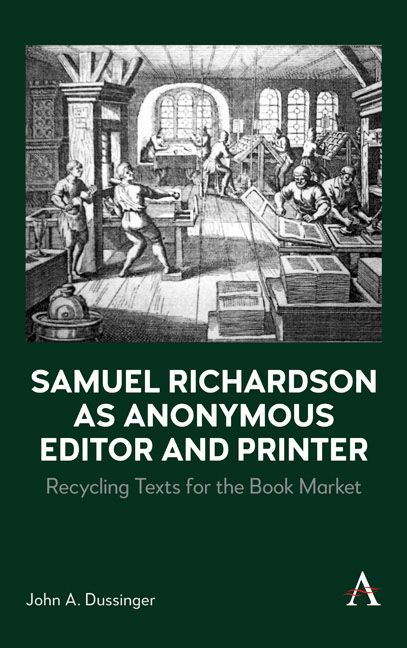Book contents
- Frontmatter
- Contents
- 1 Introduction to The True Briton: Oaths of Allegiance and Women’s Empowerment
- 2 Selected Texts of The True Briton
- 3 Introduction to The Weekly Miscellany: Sarah Chapone, Women’s “Championess”
- 4 Selected Texts of The Weekly Miscellany
- Conclusion: Richardson’s Press and Women’s Entry into Public Life
- Bibliography
- Index
1 - Introduction to The True Briton: Oaths of Allegiance and Women’s Empowerment
Published online by Cambridge University Press: 13 April 2024
- Frontmatter
- Contents
- 1 Introduction to The True Briton: Oaths of Allegiance and Women’s Empowerment
- 2 Selected Texts of The True Briton
- 3 Introduction to The Weekly Miscellany: Sarah Chapone, Women’s “Championess”
- 4 Selected Texts of The Weekly Miscellany
- Conclusion: Richardson’s Press and Women’s Entry into Public Life
- Bibliography
- Index
Summary
During the first two decades of his printing career, Richardson was associated with seven journals: The True Briton (1723–1724), The Plain Dealer (1724–1725), The Daily Journal (1721–1737), The Prompter (1734–1736), The Daily Gazetteer (1735–1746), The Weekly Miscellany (1733–36), and The Citizen (1739). Years before the appearance of his first work of fiction, he was already known among his fellow printers for being a gifted writer. In the January 1736 issue of the Gentleman's Magazine (p. 51), Edward Cave, the editor, observed that Richardson had “often agreeably entertain’d with Elegant Disquisitions in Prose.” Among these anonymous works were likely pieces contributed to some of these journals as well as such pamphlets as The Infidel Convicted (1731), The Oxford Methodists (1733), The Apprentice's Vade Mecum (1734), and the Seasonable Examination of the Pleas and Pretensions of the Proprietors of, and Subscribers to, Play-Houses, Erected in Defiance of the Royal License (1735).
Since anonymous publication in this period was a closely guarded secret between writers and printers, the inquisitive reader today has few opportunities to establish authorship beyond a reasonable doubt. The only recorded attribution by early commentators to identify Richardson's anonymous contributions, one to the True Briton, is found in John Nichols's Literary Anecdotes, where in a footnote he states that “it seems highly probable that the sixth [No. 6 (June 21, 1723)] was written by himself as it is much in his manner.” Although earlier Richardson scholars have dismissed this attribution, after a more thorough examination of this journal, I found grounds for suspecting that this and at least 11 other issues owe something to this printer. In any case, the political themes in letters signed A.B. in True Briton No. 9 (July 1, 1713); No. 19 (August 19, 1723); No. 24 (August 23, 1723); and No. 25 (August 26, 1723) are closely connected and appear to be written by the same person. As I will argue, the five letters in this journal signed with women's names also appear to be written by the same person, and most likely Richardson.
- Type
- Chapter
- Information
- Samuel Richardson as Anonymous Editor and PrinterRecycling Texts for the Book Market, pp. 1 - 6Publisher: Anthem PressPrint publication year: 2024

